Are you looking for a contractor?
Submit our quick form and get quotes now!
Table of Contents
5 min read
How to Install a French Drain
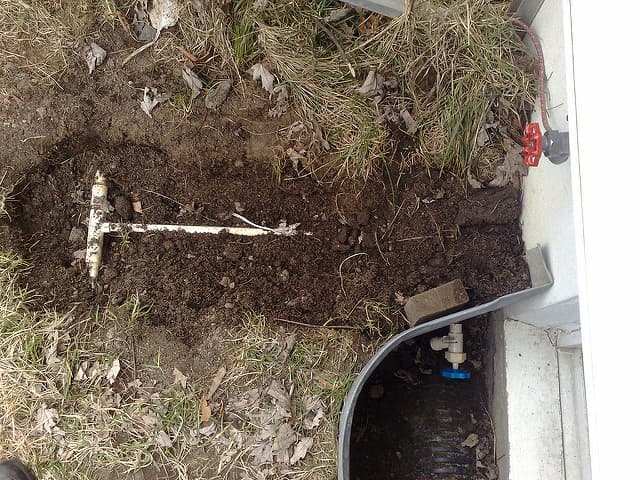

5 min read
How to Install a French Drain
Exterior renovationsHow to Install a French Drain
Do you know if your yard is properly drained? Have you noticed white powder on the concrete, mould at the bottom of the walls, water or wet concrete on the slab, or even a lingering humidity or a foul odour? Well, if so, it is about time to upgrade to a French drain!
Why choose a French drain?
A French drain is a simple and efficient solution for improperly drained yards, whether you live in a phreatic zone or nearby water. It will help protect your home's foundation and prevent water from seeping in and causing serious damage.
Water seepage is serious as it has a direct impact on the strength of the exposed concrete walls, resulting in the build-up of mould and mildew, which in turn leads to cracked concrete.
Mould negatively affects indoor air quality and increases the risk of lung disease, while a cracked foundation can cause bowing in the structure.
How to install a French drain
First and foremost, before you proceed with the installation of a French drain, you should consult with a foundation professional to obtain a diagnostic. Should a French drain installation be necessary, your first step will be excavation.
Clearing the foundation is a delicate process as it involves digging a trench around the perimeter of the house. Pay close attention to the various pipes or other wires buried around the house; you certainly would not want to break through a water pipe with a shovel! Then, your land will be poorly drained, not to mention completely flooded.
Note that the trench should be 20 inches wide. Depth-wise, make sure it is deep enough so that the top of the drain is well below the concrete foundation slab. Then spread a six-inch layer of gravel along the bottom of the trench.
Next, install the geotextile fabric according to the manufacturer's instructions. Place the French drain on top of the fabric and connect it to the sump. Finally, cover the whole area with six inches of gravel and permeable soil.
During the installation, keep in mind that the drain must be diverted to a low area on the property such as a gutter or a wooded area.
Note: Avoid aiming a French drain or any other drainage apparatus toward your neighbour's house.
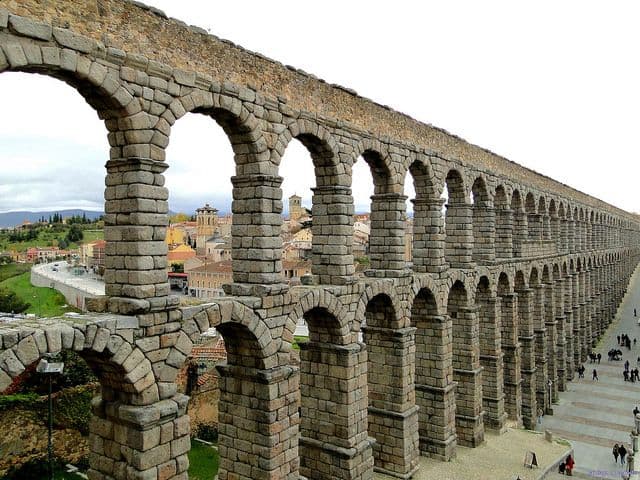
L'aqueduc romain de Ségovie, Espagne
Photo: santiago lopez-pastor
Step by step instructions
According to Ecohome, should you have the choice between two types of plastic French drains, you should opt for a rigid drain instead of the flexible one with slits. It should also be noted that it is wiser to choose a pipe with slots rather than small predrilled holes.
This will allow fewer small particles to penetrate the drain, thereby minimizing the chance of blockage. Also, provide a six-inch slope for every 50 feet of drain.
The following steps are recommended for proper installation:
Dig a relatively deep trench eight inches wide (the top part of the drain should be levelled with the slab). Carefully excavate as you will be held responsible for damage to utility connections (gas, electricity, water, sewer, cable, etc.);
Spread a six-inch layer of gravel at the bottom of the trench;
Lay the geotextile fabric over the layer of gravel. This will prevent the flow of sediment. Ensure that the excess portion of the geotextile fabric is left in place, as it will be folded over the drain;
Place the French drain over the fabric. The drain must be installed as close to the footing as possible, levelled and sloped down to its drip point;
Connect the drain to the sump (catch or tank that collects liquids from a drainpipe) or to the sewer;
Cover the pipes with about six inches of gravel or crushed stone, which will allow for proper water drainage. There should be six inches of gravel on each side of the drain;
Fill the trench with permeable soil, that will ensure a good percolation through the French drain. You can use excavated permeable soil provided it is permeable.
Before excavating, define the area most exposed to groundwater, locate the various underground utilities and determine the flow path.
Tools and materials needed
To complete your French drain installation project, you will need to have the following tools and materials handy:
Shovel;
French drain;
Crushed stone;
Geotextile fabric;
Permeable soil.
Average installation cost of a French drain
The price of a foundation drain can vary by thousands of dollars from one contractor to another, and will usually range from $7,000 to $12,000. However, the approximate cost is estimated between $150 and $300 per linear foot (including excavation). The project cost can vary depending on several factors, including the slope of the land and the length of the French drain required for optimal installation.
How to change a French drain
According to CAA-Quebec, it is possible to restore a drain if only a single section is clogged. A partial repair can also be done, like on one side of the building. Hopefully, you can walk away with a bill of a few thousand dollars only.
If the entire system needs to be replaced, the bill will be much higher, ranging from $7,000 to $12,000, maybe more. Therefore, getting detailed quotes from two or three contractors with a valid and appropriate license (from Régie du bâtiment du Québec) and having experience in foundation drain installation is essential.
Prior to undertaking the work, the contractor must carry out the following verifications:
Checking local drainage regulations, including the drain connection to the municipal sewer;
Consult Info-Excavation to locate the various underground conduits and cables for utilities (electricity, natural gas, telephone, etc.);
Site inspection with the owner to determine the location of private installations beneath ground level (electrical cable, automatic irrigation pipes, etc.).
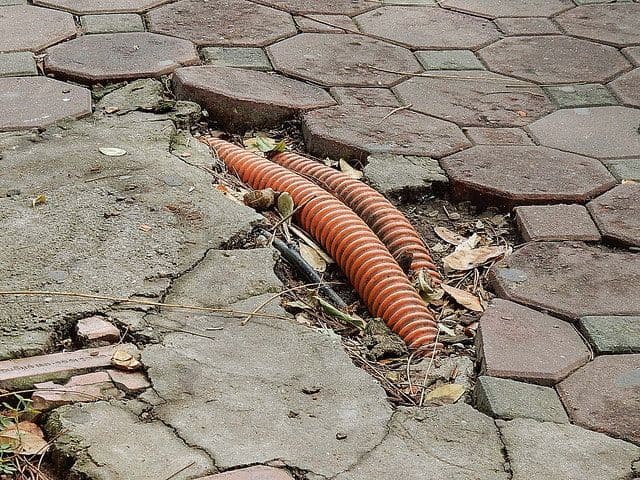
Photo: Michael Coghlan
Post-excavation installation:
Given that excavating your property is not an everyday occurrence, it is important to plan ahead by doing other related work on the foundation:
Installing an elastomeric membrane to protect against humidity;
Checking the depth of the footing for frost protection;
Removal of the clay soil to replace it with gravelly materials.
Note that when the ground freezes, it tends to expand just like ice would. Foundations must be deeply embedded in the ground to prevent frost from reaching underneath the foundation and then lifting it.
Remember to…
Having a French drain installed, repaired or changed is a project that will greatly increase the value of your home. If you decide to sell your house one day, having written proof (contractor's invoice, required permits and plans, and specifications) is a good way to show your good faith by highlighting the quality of the property's maintenance. Without written proof of the work, it can be inferred that the work was not performed by qualified workers.
In addition to keeping your paperwork, plan for annual maintenance of the French drain to avoid the system’s loss of efficiency. Despite the various protections in place, a French drain can clog. If this is the case, it no longer plays its role and the risk of water seepage increases.
Photo: Nicolas Marchildon
Author: René-Maxime Parent
Updates: Karine Dutemple
Get 3 renovation quotes for your French drain project
RenoQuotes.com can help you get quotes for your French drain project. By submitting your project, we’ll put you in contact with top-rated contractors. Fill in the form on the homepage (it only takes a few minutes), and you will get estimates from trusted professionals.
Dial 1-844 828-1588 to speak with one of our customer service representatives.
Last modified 2023-11-20
Looking for something else?
Related articles
The latest industry news, interviews, technologies, and resources.
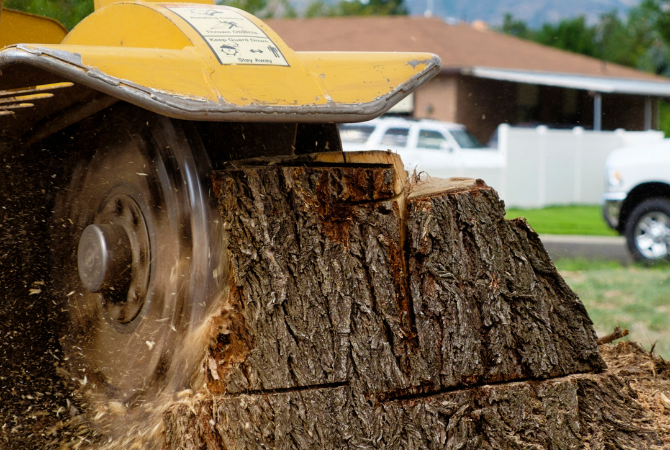
RenoQuotes.com • 26 Mar 2024
Are you looking to increase the space available in your yard, or simply for health and safety reasons, need to remove a tree? Note that once said tree is cut down, its stump will remain rooted, and you should really consider having it removed.
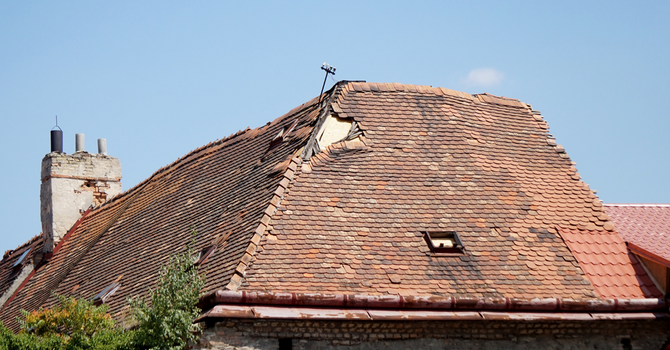
RenoQuotes.com • 07 Nov 2023
Having a roof over our heads is one of the many modern luxuries to which we all aspire. In fact, the roof of one’s home is a very important feature. Not only does it prevent the outdoor elements from entering indoors, but it actually regulates interior temperatures.
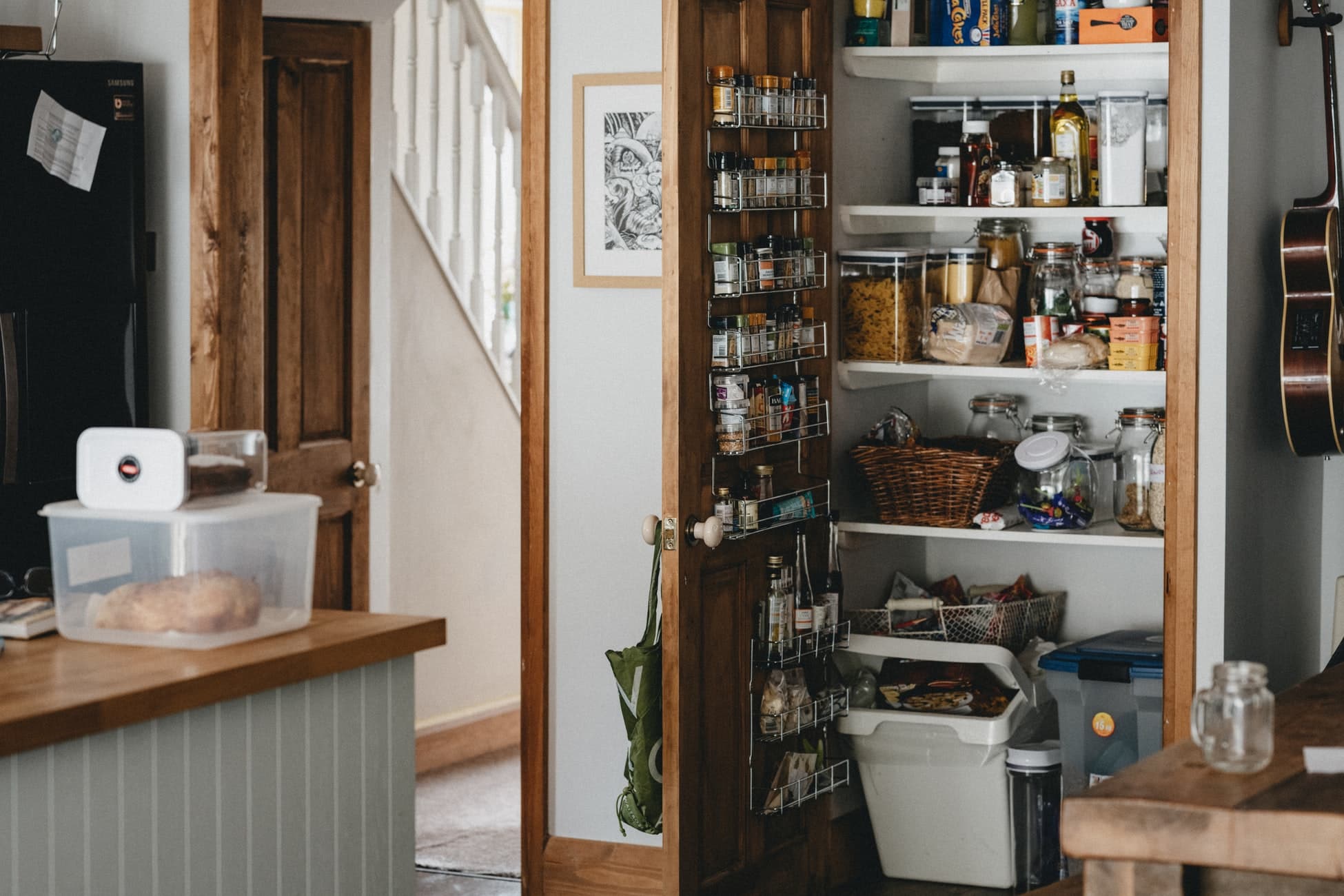
Karine Dutemple • 07 Nov 2023
For every storage space at home, there is inevitable long-term chaos. Fortunately for us, there are now many ways to organize these spaces, whether it's the wardrobe, kitchen cabinets or rooms like the laundry room. Apart from Ikea's convenient facilities, there are other ingenious and original tips that will help you optimize the organization of your closets.
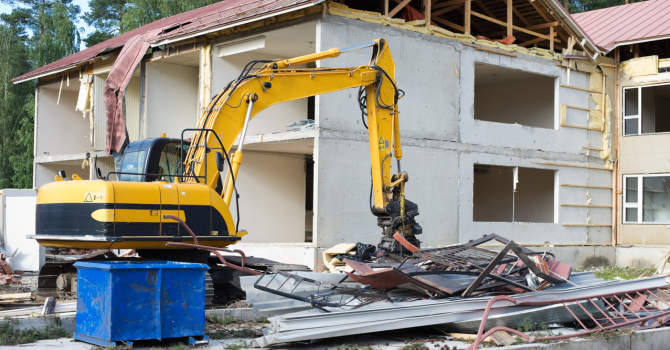
N/A • 07 Nov 2023
It might take years to find your dream home, especially as neighbourhoods continue to develop and are becoming overcrowded. Maybe you’ve found the perfect spot, but the house itself isn’t quite what you’d envisioned. Have you considered demolishing it? Demolishing whole homes or parts of its interior would allow you to take the land that you want and build upon it your dream home. Of course, these projects come at a cost...so what is it?
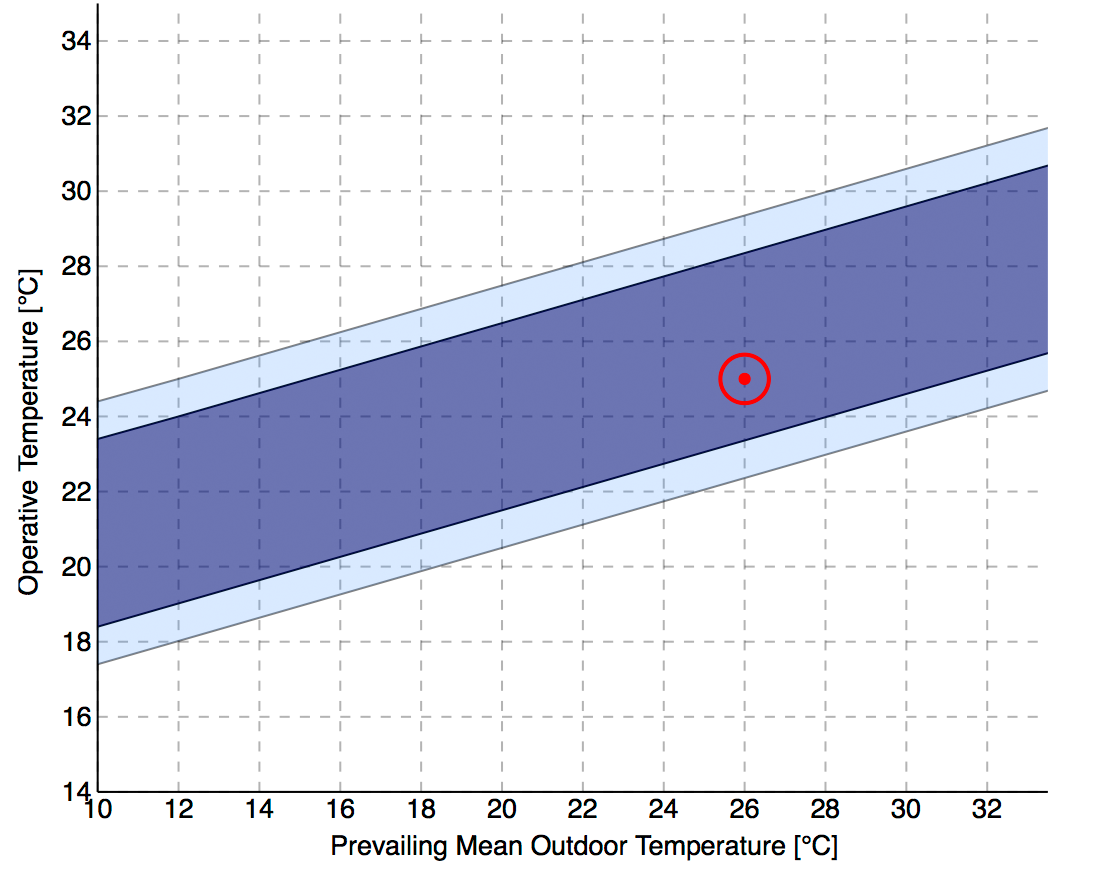
RenoQuotes.com • 07 Nov 2023
Proper airflow in the home is of the utmost importance, as it has a direct influence on both heat and moisture flow. Airflow is responsible for carrying moisture through the materials, walls, ceilings and floors of your home, and this impacts the longevity and performance of these surfaces.